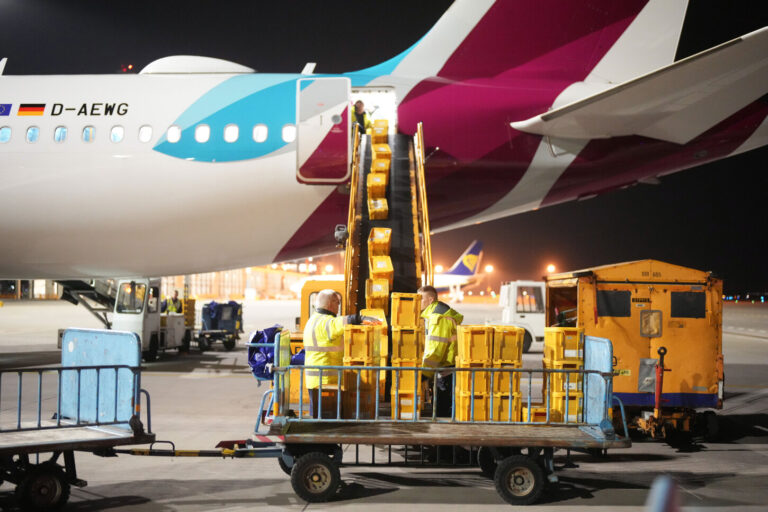As letter mail volumes continue to fall globally, Deutsche Post has discontinued its overnight airmail network for domestic letters in Germany, marking the end of 63 years of operations.
The final flight took place on March 28 transporting letters to and from northern and southern Germany on the routes Stuttgart-Berlin, Hanover-Munich and Hanover-Stuttgart. These letter mail volumes will now be transported via road networks, enabling Deutsche Post to reduce transport-related CO2 emissions on these routes by more than 80%.
Marc Hitschfeld, chief operations officer of DHL Group’s Post & Parcel Germany division, commented, “We conclude the era of overnight letter airmail with mixed feelings. In times of climate change, airmail for domestic letters within Germany can no longer be justified – also because there is no longer the same urgency associated with letter mail as in decades past. So, on the one hand, the end of domestic airmail is good news for the environment. On the other hand, the end of overnight airmail closes a chapter of postal history which many Deutsche Post employees have identified with for decades.”
History of airmail
The transport of letters and postcards by air began on September 1, 1961 after Germany’s Federal Minister of Post and Telecommunications, Richard Stücklen, and the chairman of Deutsche Lufthansa signed a contract for the transport of airmail without a surcharge.
At the time, letters and telegrams were the only medium for quickly transmitting written communication – a function long since assumed by digital media such as email and WhatsApp.
The first partner in the overnight airmail network was Lufthansa, which serviced all routes at the time apart from the air corridor to Berlin controlled by the Western Allies, which was serviced by the American carrier PanAm until 1990.
Over the years, additional airlines were added to service the network, with Lufthansa terminating its service in 2008. Frankfurt am Main airport served as the network hub for decades but lost this role in 2005 due to the ban on night flights.
As late as 1996, Deutsche Post was still transporting some 430 metric tons of letter mail with 26 partner airline aircraft to 45 destinations every night. In the end, it was only 53 metric tons, with six aircraft servicing the routes Stuttgart-Berlin, Hanover-Munich and Hanover-Stuttgart in both directions. This amounted to some 1.5 million letters flown each night or roughly 270,000 items per aircraft on average.
Modern approach
Political and social consensus in Germany today has largely determined that ensuring speedy delivery of most domestic letter mail by the following workday is no longer a core component of universal postal service. Instead, focus is much more on the social-environmental aspects and impacts of the postal service.
Accordingly, the reforms to Germany’s Postal Act (PostModG) – currently in deliberation in Germany’s parliament and expected to take effect soon – stipulate longer transit times for letter mail, which has long been the norm in most EU countries. Nevertheless, Deutsche Post will continue to ensure fast letter mail transportation between northern and southern Germany with the deployment of Sprinter vans, among other modes. This is also made possible by reduced letter mail volumes and sorting times.


